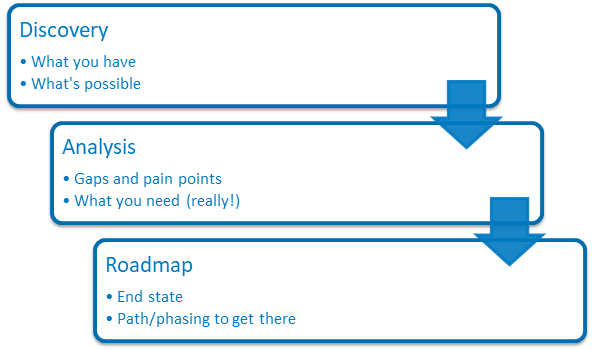As noted in my article How to Respond to Visionary Ideas, today’s “hot technologies” target business challenges that grab senior leadership attention – e.g., staffing demands, performance improvement, cost containment, revenue drivers, customer satisfaction. For example:
- Bots purport to deflect loads of calls, chats, and text messages
- AI improves routing, workforce management, desktop tools, and workflows
- Omnichannel solutions give customers the means to engage with centers using their preferred channels, lowering level of effort and increasing affinity with the company and its products
- Analytics yield insights to deliver personalized customer experiences and realize operational efficiencies
When top-down pressure combines with bottom-up enthusiasm, projects often find funding without ever answering some fundamental questions:

- How does this initiative fit within our short- and long-term business strategies?
- What problem(s) are we trying to solve (and are they the most urgent ones)?
- How will this improve the customer experience and/or our efficiency and effectiveness?
- And how will it integrate with our existing technology?
It can be easy to bypass the tough questions. API-first solutions give you the means to integrate diverse technologies and adapt features and functions to your needs. Apps can be configured readily using an intuitive user interface and some offer industry-specific content straight “out of the box.” Constant innovation suggests a level of agility that prepares centers to implement the “next big thing.” Technology can seem more like Legos and less like complex instruction sets and streams of data that must be fine-tuned to work harmoniously.
Today’s financial models also encourage leap-before-you-look sensibilities. Vendors offer free pilots and options to bill on a month-to-month basis. (Of course, they’ll sweeten the deal if you agree to a multi-year contract!) A vibrant marketplace provides a gaggle of downloadable applications that can be implemented with little fanfare. The purchase process contributes to the impression that technology no longer requires much foresight or effort (and certainly not IT!), and you can change course on a dime if things don’t work out as anticipated.
Speaking of IT… Cloud-based solutions fan the flames by helping CCs bypass one of the biggest technology-related issues they face: limited IT resources. With vendors providing services that used to be done in-house, IT focuses on applications that are mission-critical for the organization as a whole and lets the business unit (like the CC!) fend for themselves. While getting out from under IT’s yoke may seem appealing, CCs risk losing a valued team member at the planning table who might ask some gnarly technical questions and make sure that all of the pieces will fit together nicely.
Even if some of these concerns cross your mind, you may say to yourself: “I don’t have time for (or don’t need, or don’t know how to develop) a plan, roadmap, or cross-team evaluation. We are moving at light speed, and I need to seize the moment and pursue the technology we’re so excited about!” You dive in on a wing and a prayer and hope the ROI will pan out.
Whatever short-term benefits accrue to the quick-and-easy implementations, the longer term consequences of supporting nonintegrated point solutions are troublesome.
- Things may not “plug and play” as nicely as you’ve been promised.
- Customers don’t experience a seamless interface across channels.
- Workforce management, quality monitoring, and other workforce engagement tools are hard to tie in across channels.
- Support personnel may not be assigned to help you reap the benefits of your investment – short-term and long-term.
To avoid these pitfalls, it really pays to spend a bit of time up front crafting a technology road map to ensure that the technology you purchase aligns with your strategic vision, integrates smoothly into your current and future environment, and gets the requisite resources to make the investment worthwhile. Key steps to get on track:

For more information, download Getting Your Technology On Track.
